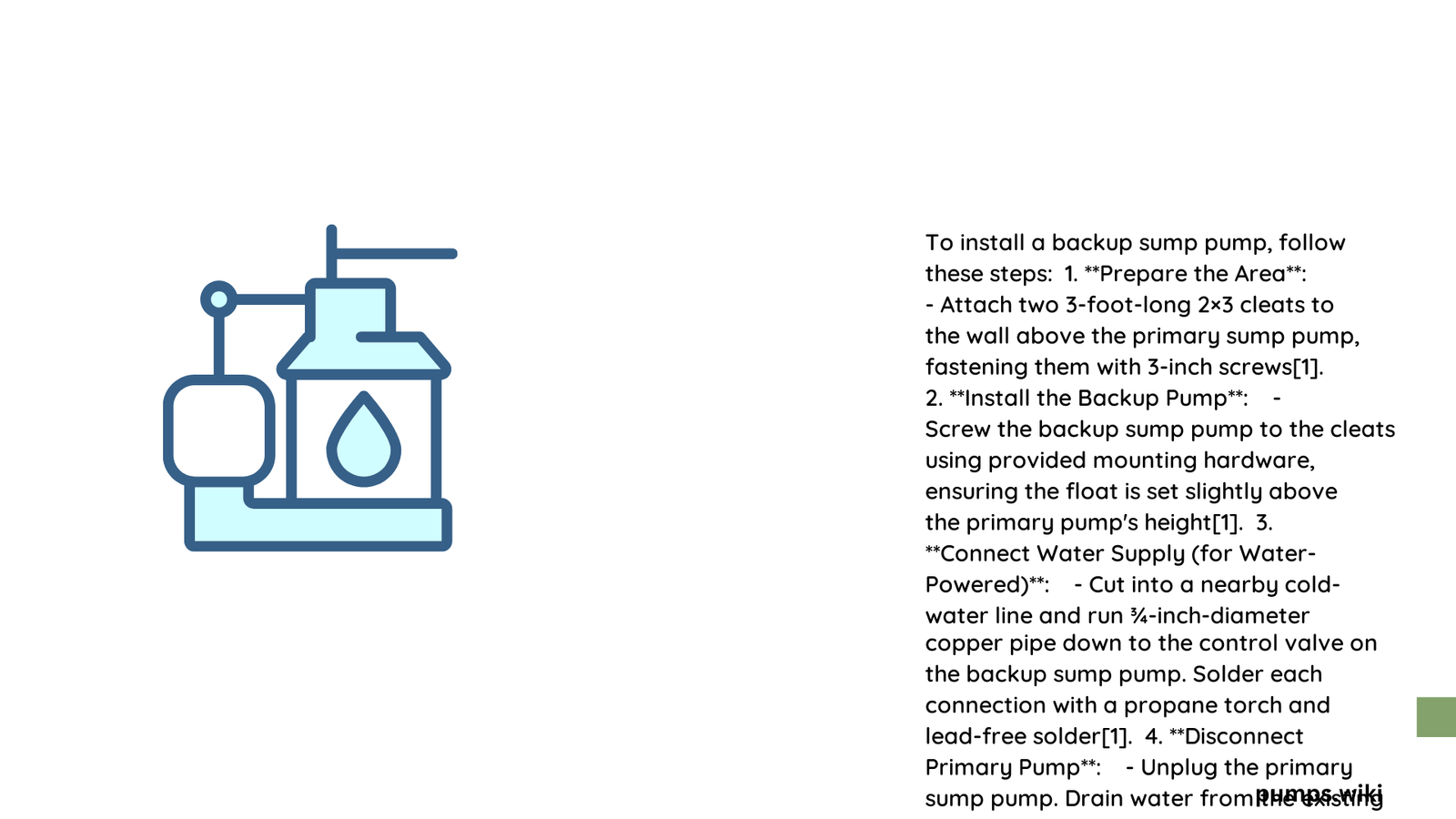Protecting your basement from potential water damage requires a reliable backup sump pump system. Homeowners facing recurring flooding risks or power outage concerns can implement strategic backup solutions that ensure continuous water removal. This comprehensive guide will walk you through precise installation techniques for battery-operated and water-powered backup sump pumps, addressing critical challenges and providing expert insights from This Old House professionals.
Why Do You Need a Backup Sump Pump?
Basement flooding can cause devastating damage to your home’s foundation, electrical systems, and personal belongings. A backup sump pump provides critical protection during primary pump failures or electrical interruptions, offering homeowners peace of mind during extreme weather conditions.
Key Advantages of Backup Sump Pumps
| Pump Type | Water Removal Capacity | Power Source | Cost Range |
|---|---|---|---|
| Battery-Powered | Up to 2,000 gallons/hour | 12V Deep-Cycle Battery | $100 – $1,000 |
| Water-Powered | 1,000 – 1,500 gallons/hour | Municipal Water Pressure | $150 – $250 |
What Equipment Will You Need?

Essential Tools and Materials
- PVC pipes and fittings
- Teflon tape
- Check valves
- Stainless steel hose clamps
- Deep-cycle marine battery
- Battery charger
- Copper pipes (for water-powered systems)
- Soldering equipment
- Propane torch
- Lead-free solder
How to Prepare for Installation?
Preliminary Steps
- Inspect Existing Sump Pit
- Remove current pump
- Clean pit thoroughly
- Check for structural damage
-
Measure available space
-
Gather Necessary Documentation
- Review manufacturer’s installation guidelines
- Check local building codes
- Verify warranty requirements
Can You Install a Battery-Powered Backup Pump?
Detailed Installation Process
Pump Placement
- Position primary and backup pumps in sump pit
- Apply Teflon tape to valve connections
- Secure pumps using appropriate mounting hardware
Electrical Connections
- Connect low-voltage cable between battery and pump
- Install battery in protective plastic container
- Ensure battery charger is plugged into dedicated outlet
What About Water-Powered Backup Pumps?
Alternative Installation Method
- Mount pump on wall cleats
- Connect to cold water supply line
- Modify existing discharge pipe
- Install control valve
- Solder copper pipe connections
How Much Will Installation Cost?
Breakdown of Expenses
- Equipment: $100 – $1,000
- Professional Labor: $200 – $500
- Additional Materials: $100 – $250
What Challenges Might You Encounter?
Potential Installation Obstacles
- Limited space in sump pit
- Complex plumbing configurations
- Electrical connection complexities
- Ensuring proper float switch positioning
Pro Tips for Successful Installation
- Always test system thoroughly after installation
- Maintain battery charge regularly
- Schedule annual professional inspections
- Keep detailed maintenance records
Safety Considerations
- Disconnect electrical power before working
- Use proper protective equipment
- Follow manufacturer’s guidelines precisely
- Consider professional help if uncertain
Final Recommendations
Investing in a backup sump pump provides critical protection for your home. Whether choosing battery-powered or water-powered systems, careful installation and regular maintenance are key to effective flood prevention.
Recommended Next Steps
- Assess your specific basement water management needs
- Select appropriate backup pump system
- Gather necessary tools and materials
- Follow installation guidelines carefully
- Schedule professional inspection if needed
